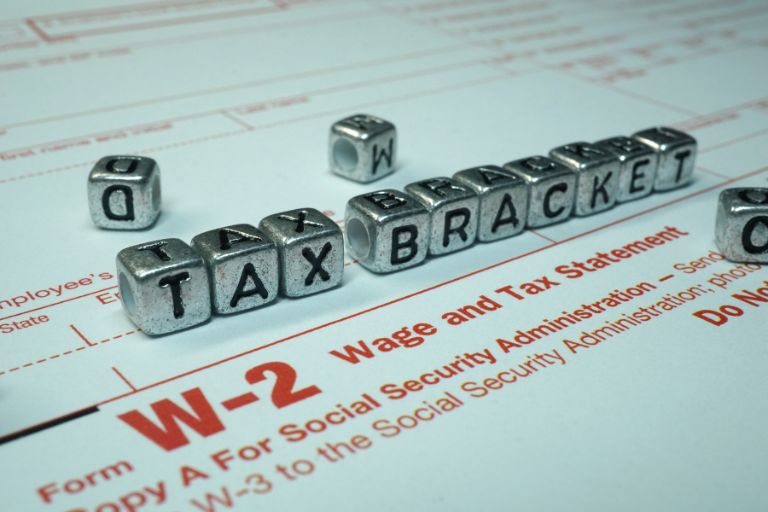Welcome, dear reader, to the wild and wacky world of tax brackets! Now, before you run away screaming, let me assure you that while tax brackets might sound about as exciting as watching paint dry, they’re actually a vital part of understanding how to plan your taxes. And who knows, you might even find a chuckle or two along the way!
So, grab your calculator, your sense of humor, and let’s dive headfirst into the thrilling rollercoaster ride that is tax planning. Buckle up, because it’s going to be a riotous journey!
What on Earth is a Tax Bracket?
Good question, dear reader! A tax bracket, despite sounding like something you’d use to hang your taxes on the wall, is actually a range of incomes taxed at a given rate. Think of it like a ladder, where each rung represents a different income level, and the higher you climb, the more taxes you pay. It’s like the world’s least fun game of Chutes and Ladders.
Now, you might be thinking, “That’s not fair! Why should I have to pay more taxes just because I make more money?” Well, this system, known as progressive taxation, is designed to ensure that those who have more, pay more. It’s like Robin Hood, but with less archery and more paperwork.
The Different Tax Brackets
In the United States, there are seven federal tax brackets: 10%, 12%, 22%, 24%, 32%, 35%, and 37%. These percentages represent the tax rate applied to the income within that bracket. So, if you’re in the 22% tax bracket, you’re not paying 22% on all your income, just the portion that falls within that bracket. It’s like a pie, where each slice represents a different tax rate. And just like a pie, the more you have, the more you have to share.
But wait, there’s more! In addition to federal tax brackets, there are also state tax brackets, which vary from state to state. So, depending on where you live, you might be paying more or less in state taxes. It’s like a game of Tax Bingo, where the numbers are always changing and the prizes are…well, there are no prizes. Just taxes.
How to Determine Your Tax Bracket
So, how do you know which tax bracket you fall into? Well, it’s not as simple as just looking at your income. You also have to take into account your filing status (single, married filing jointly, etc.), and any deductions or credits you might be eligible for. It’s like a giant, complicated puzzle, where the pieces are your income and deductions, and the picture is your tax bracket.
But don’t worry, you don’t have to figure it out all on your own! There are plenty of tax calculators and software programs out there that can help you determine your tax bracket. It’s like having a personal tax wizard at your disposal, ready to help you navigate the labyrinth of tax planning. Just remember, unlike a real wizard, they can’t make your taxes disappear!
The Importance of Understanding Your Tax Bracket
Now that we’ve covered what a tax bracket is and how to determine yours, let’s talk about why it’s so important to understand. Knowing your tax bracket can help you make smarter financial decisions, like how much to contribute to retirement accounts, whether to take certain deductions, and when to realize capital gains or losses. It’s like having a roadmap for your financial journey, helping you avoid any tax potholes along the way.
Plus, understanding your tax bracket can help you plan for the future. For example, if you’re planning to retire soon and your income will be lower, you might be in a lower tax bracket. This could affect decisions like when to take Social Security benefits or how to withdraw from your retirement accounts. It’s like having a crystal ball, but instead of seeing the future, you’re seeing your future tax situation.
Strategies for Tax Planning
Now that you understand your tax bracket, you can start planning your taxes. This might involve strategies like income shifting, where you move income from one year to another to take advantage of lower tax rates. Or, you might consider tax-efficient investing, where you choose investments that generate less taxable income. It’s like playing a game of Tax Chess, where the goal is to checkmate the IRS.
Of course, tax planning isn’t a one-size-fits-all approach. What works for one person might not work for another, so it’s important to consult with a tax professional or financial advisor. They can help you come up with a tax plan that’s tailored to your specific situation. It’s like having a personal tax tailor, ready to craft a tax plan that fits you perfectly.
Common Misconceptions About Tax Brackets
Despite their importance, there are a lot of misconceptions about tax brackets. For example, some people think that if they earn one dollar more and move into a higher tax bracket, they’ll pay more in taxes on all their income. But as we’ve discussed, that’s not how it works. You only pay the higher tax rate on the income within that bracket. It’s like thinking that if you step on a crack, you’ll break your mother’s back. It’s just not true!
Another common misconception is that all your income is taxed at the same rate. But as we’ve seen, different portions of your income are taxed at different rates, depending on which tax bracket they fall into. It’s like thinking that all the slices of a pizza are the same size, when in reality, some are bigger than others. And just like pizza, when it comes to taxes, size matters!
Conclusion: Tax Brackets and Tax Planning
Well, dear reader, we’ve come to the end of our hilarious journey through the world of tax brackets and tax planning. I hope you’ve learned a thing or two, and maybe even had a chuckle along the way. Remember, understanding your tax bracket is a crucial part of tax planning, and can help you make smarter financial decisions. So don’t be afraid of those tax brackets – embrace them, understand them, and use them to your advantage!

And remember, while taxes might seem complicated and confusing, they don’t have to be. With a little knowledge and a sense of humor, you can navigate the world of tax planning like a pro. So go forth, dear reader, and conquer those tax brackets! And who knows, maybe next time tax season rolls around, you’ll be the one laughing all the way to the bank.


